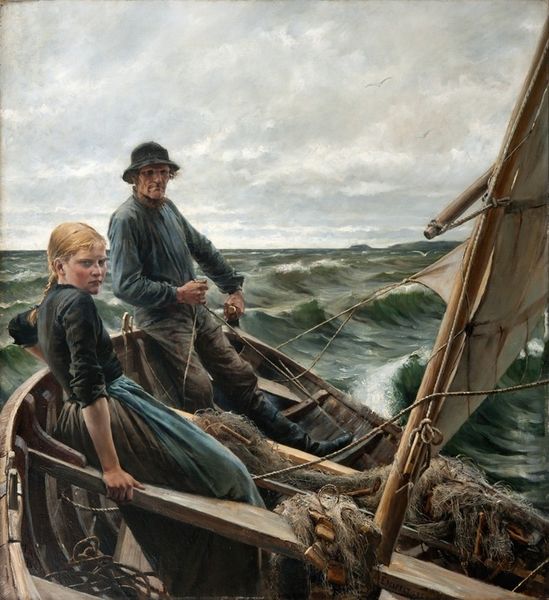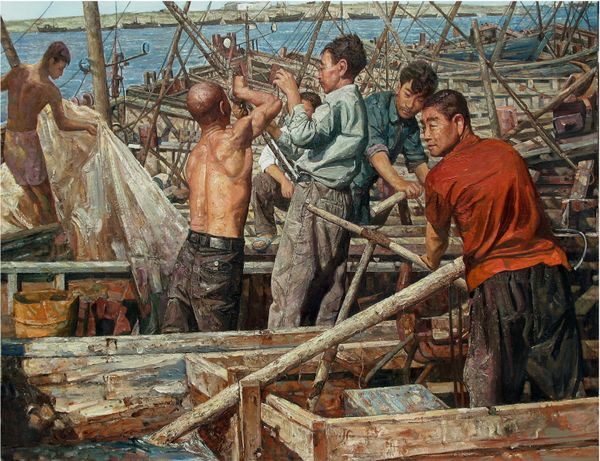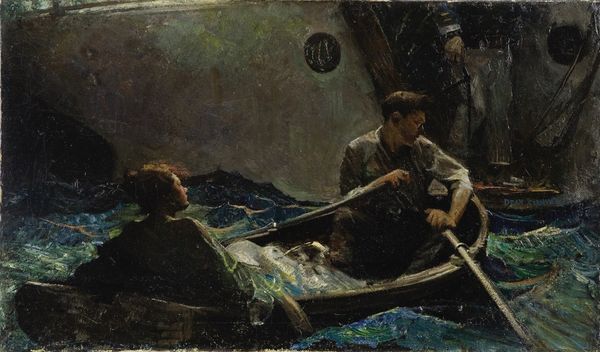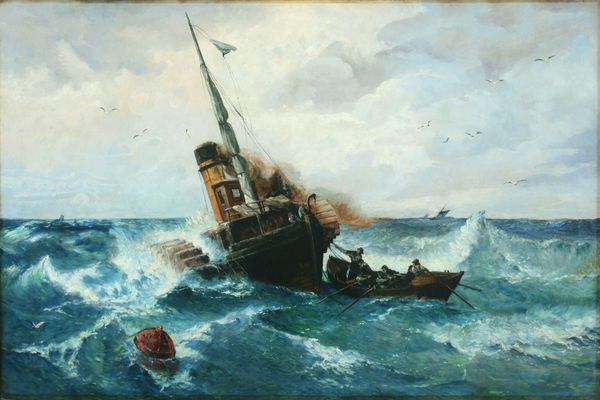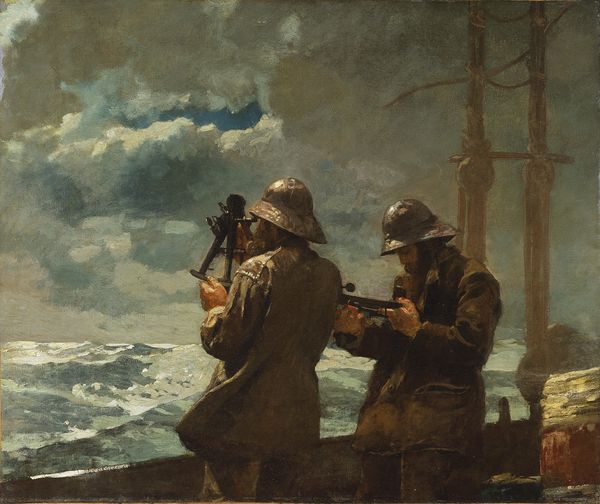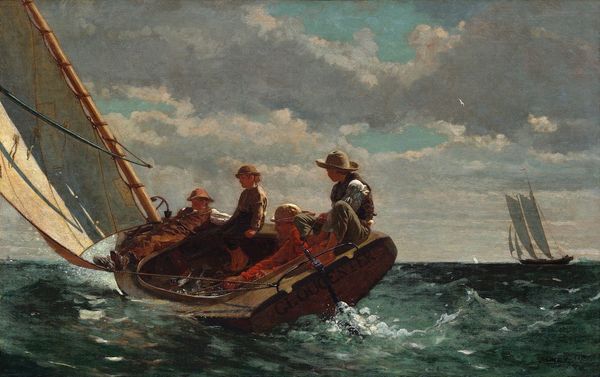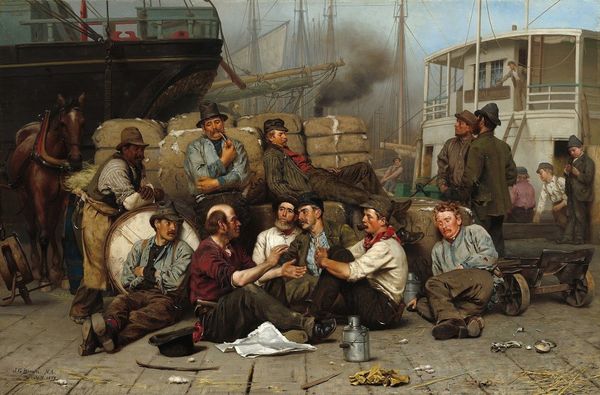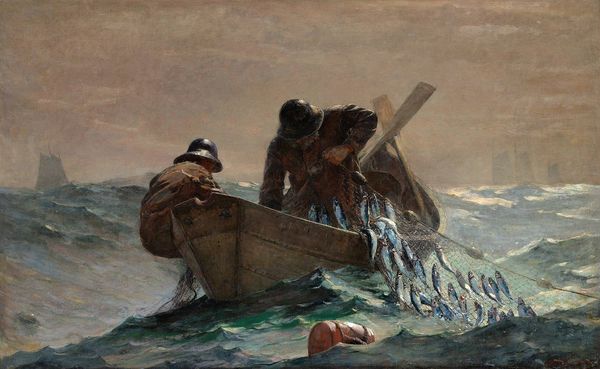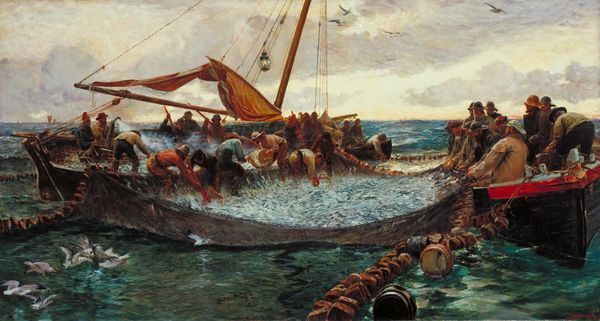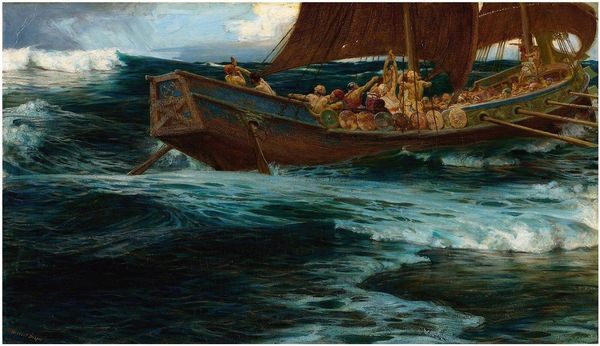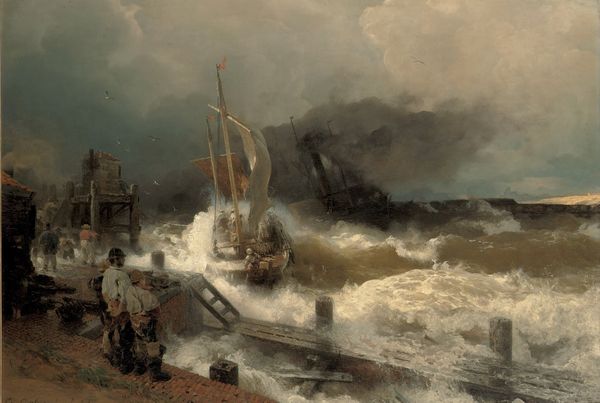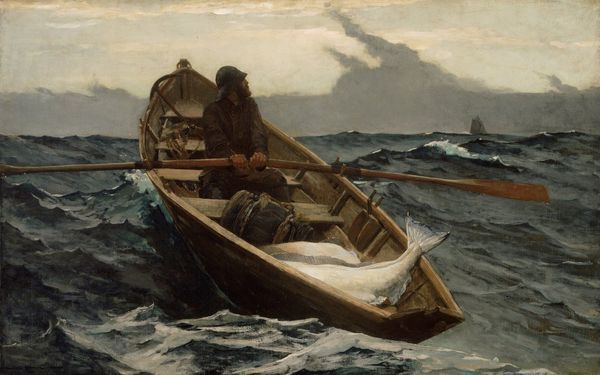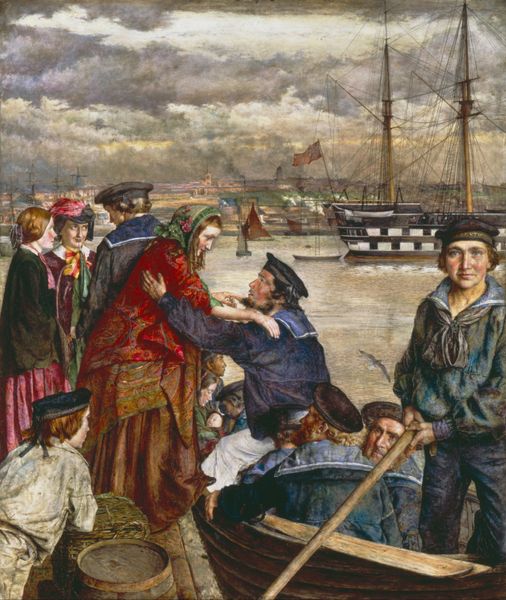
Dimensions: support: 1854 x 1397 mm
Copyright: CC-BY-NC-ND 4.0 DEED, Photo: Tate
Curator: Henry Scott Tuke, born in 1858, offers us "All Hands to the Pumps", a piece that feels… well, overwhelmingly urgent. Editor: Yes, the initial impression is one of desperate activity—a chaotic dance with survival under a furious sky. The diagonal composition really throws you into the fray. Curator: Exactly, and it's gigantic, almost two meters tall. Tuke typically focused on quieter moments, often of boys bathing. This is drama, raw and immediate. The symbolism of water as chaos is unmistakable. Editor: The water itself feels almost like another character, doesn't it? Threatening to engulf everything. But the men, clustered around that central pump, they represent resilience, communal effort. Curator: I see them as archetypes, yes. The collective facing a primal force. I find myself thinking of Melville's "Moby Dick" and the romanticization of maritime struggle. Editor: Well, for me, the historical context is interesting. Late 19th-century Britain saw a fascination with the sea and naval power. This image captures both the romance and the brutal reality of life at sea, but what is striking is the bare flesh tones amid a monochrome palette. Curator: It’s true, the painting makes you feel a little seasick just looking at it. Ultimately it reminds us of our shared vulnerability in the face of overwhelming odds. Editor: A powerful reminder that even in chaos, there's a strange, enduring beauty to be found in shared struggle.
Comments
tate 6 months ago
⋮
http://www.tate.org.uk/art/artworks/tuke-all-hands-to-the-pumps-n01618
Join the conversation
Join millions of artists and users on Artera today and experience the ultimate creative platform.
tate 6 months ago
⋮
This picture shows a ship that has lost one of its sails, and is being swamped by a storm. The crew desperately pump water out of the hull. Tuke painted this scene aboard an old French brig anchored in Falmouth Harbour. He had lived in Falmouth as a boy, but in 1885 decided to leave London to settle there permanently encouraged by the Newlyn School of open-air painters. In Cornwall he focused on painting the male nude in the open air but also produced marine subjects like this. Gallery label, November 2016
